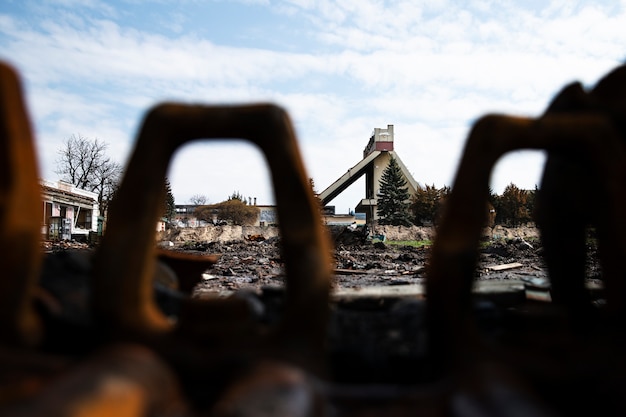Key Facts about the Battle of Stalingrad

The Battle of Stalingrad was a turning point in World War II.
Stalingrad’s strategic location on the Volga River made it a key target for both the German and Soviet forces.
The Battle of Stalingrad lasted for 5 months, from August 1942 to February 19
4. The battle saw some of the most intense urban warfare in history.
Over 2 million people were involved in the battle, making it one of the largest and bloodiest battles in history.
German forces initially made progress in the battle, capturing most of the city by September 19
7. However, the Soviet Union launched a massive counterattack in November 1942, encircling the German Sixth Army and trapping them in Stalingrad.
The Soviet Union’s success at Stalingrad marked the first major defeat for the German army in World War II.
Harsh winter conditions and lack of supplies contributed to the downfall of the German forces in Stalingrad.
Soviet snipers played a crucial role in defending Stalingrad, inflicting heavy casualties on the German forces.
The battle was characterized by brutal close-quarters combat in buildings and ruins across the city.
The Battle of Stalingrad claimed the lives of approximately 2 million soldiers and civilians.
The Soviet victory at Stalingrad boosted the morale of the Soviet people and marked a turning point in the war.
Stalingrad was largely destroyed during the battle, with over 90% of the city reduced to ruins.
Key Facts about the Battle of Stalingrad part 2
The Battle of Stalingrad is often considered one of the most significant battles in history.
Soviet General Vasily Chuikov played a key role in the defense of Stalingrad.
The battle saw the deployment of large-scale Soviet tank units, such as the T-
Stalingrad’s factories continued to produce ammunition and supplies for the Soviet forces during the battle.
The Battle of Stalingrad is also known as the Stalingrad Campaign or Operation Uranus.
The battle saw both sides suffer heavy losses, with the German army losing approximately 900,000 soldiers.
Over 120,000 German soldiers were captured by the Soviet Union at Stalingrad.
The battle showcased the resilience and determination of the Soviet people in defending their homeland.
Stalingrad’s importance as a transportation hub made it a crucial objective for the German army.
The Battle of Stalingrad marked a major shift in momentum on the Eastern Front, with the Soviet Union gaining the upper hand.
The battle was marked by vicious street fighting and hand-to-hand combat.
Soldiers on both sides endured extreme hardships, including hunger, cold, and disease, during the battle.
Stalingrad became a symbol of resistance and defiance against Nazi Germany.
The Battle of Stalingrad was one of the deadliest battles in history, with casualties exceeding those of many wars.
The German army suffered from supply shortages and logistical difficulties during the battle.
The Soviet Union’s success at Stalingrad was a major blow to Hitler’s plans for conquering the Soviet Union.
The battle marked a change in Hitler’s strategy, shifting from offensive operations to defensive warfare.
The Battle of Stalingrad demonstrated the effectiveness of Soviet defensive tactics and the advantage of fighting on home soil.
Stalingrad’s location on the Eastern Front made it a crucial battleground for the outcome of World War II.
The battle saw the Soviet army carry out successful river crossings and amphibious operations.
Stalingrad’s civilians played a significant role in the defense of the city, assisting the Soviet army and providing information on German movements.
The Battle of Stalingrad resulted in massive losses for both the German army and the Soviet Union, but it ultimately led to the defeat of the German forces.
The battle’s intensity and scale resulted in multiple films and books being produced to document the events and honor those involved.
The Battle of Stalingrad showcased the relentless determination of the Soviet people to resist and fight back against the German invaders.
Stalingrad’s ruins and memorials stand as a reminder of the sacrifices made during the battle.
The Battle of Stalingrad highlighted the importance of morale and motivation in warfare.
The Soviet Union’s victory at Stalingrad inspired other nations to stand up against the Axis powers and contributed to the ultimate defeat of Nazi Germany.
The battle demonstrated the effectiveness of combined arms tactics, with infantry, tanks, and artillery working together to achieve victory.
The Battle of Stalingrad forever changed the course of World War II and cemented the Soviet Union’s role as a major player in the conflict.
The battle revealed the weaknesses in German military strategy and the limitations of their resources.
The Battle of Stalingrad serves as a reminder of the human cost of war and the indomitable spirit of those who fought and died in the conflict.

